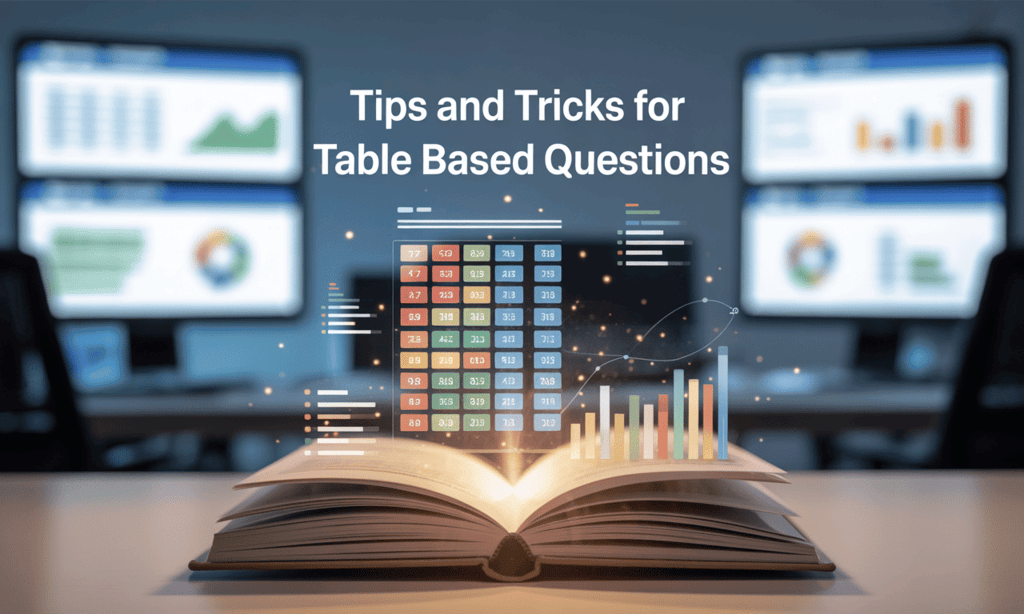Tips and Tricks for Table Based Questions | Logical Reasoning (LR) and Data Interpretation (DI) - CAT PDF Download
| Table of contents |

|
| Introduction |

|
| Step-by-Step Approach |

|
| Importance in CAT Exam |

|
| Conclusion |

|

Introduction
Table questions in the Data Interpretation and Logical Reasoning (DILR) section of the CAT exam are designed to assess your analytical and reasoning skills. These questions may look straightforward, but they demand speed, accuracy, and logical thinking. A structured approach can help you solve them effectively.
Step-by-Step Approach
1. Understand the Given Data:
- Read the headings, units, and footnotes carefully.
- Identify what each row and column represents.
- Note whether the table provides absolute values, percentages, ratios, or a mix.
2. Identify Key Parameters
- Check totals, averages, or subcategories if given.
- Look for patterns such as growth, decline, or consistent values across rows or columns.
3. Make Logical Connections
- Try to establish logical connections between different columns or rows in the table. Spot correlations or trends instead of treating data as isolated numbers.
- Consider how changes in one variable might affect others.
4. Interpret and Analyze
- Ask yourself: What is this table really showing?
- Extract insights beyond raw numbers. For example, if sales increase but profit drops, think about possible reasons.
- Use elimination when options seem close—sometimes approximations save time.
5. Verify Before Answering
- Double-check your calculations and ensure they match the data.
- Watch out for common traps such as confusing row totals with column totals.
- Confirm that your interpretation is consistent across the question set.
6. Study Question Patterns
- Review past CAT papers to identify the most common question types (percentages, ratios, averages, missing data).
- Learn standard solution strategies for each pattern.
- Familiarize yourself with tricky variations, such as multi-layered tables or data spread across multiple rows and columns.
7. Practice Under Exam Conditions
- Work with a variety of table formats to improve adaptability.
- Time yourself while practicing to build speed without losing accuracy.
- Combine speed drills with detailed reviews to strengthen both accuracy and efficiency.
Importance in CAT Exam
- Tables questions hold significant weight in the CAT-DILR section. They test your ability to quickly analyze and interpret complex data sets, a skill crucial for managerial roles.
- Success in tables questions demonstrates not only mathematical prowess but also strategic thinking and decision-making abilities.
Conclusion
Mastering tables in DILR requires a mix of careful reading, logical reasoning, and quick calculations. By studying question patterns, approaching them step by step, and practicing regularly, you can turn this question type into a scoring opportunity and strengthen your overall CAT performance.
|
77 videos|180 docs|96 tests
|
FAQs on Tips and Tricks for Table Based Questions - Logical Reasoning (LR) and Data Interpretation (DI) - CAT
| 1. What are table-based questions in the context of the CAT exam? |  |
| 2. How can I effectively approach table-based questions during the CAT exam? |  |
| 3. Why are table-based questions important in the CAT exam? |  |
| 4. What tips can help improve performance on table-based questions in the CAT exam? |  |
| 5. Are there specific strategies for managing time while solving table-based questions in the CAT exam? |  |




















